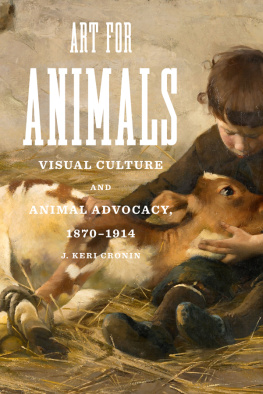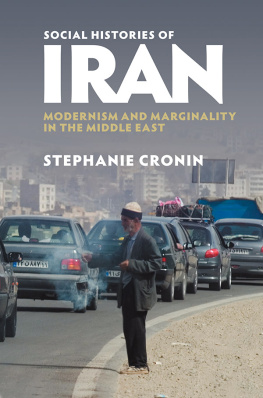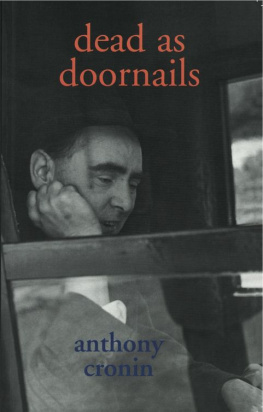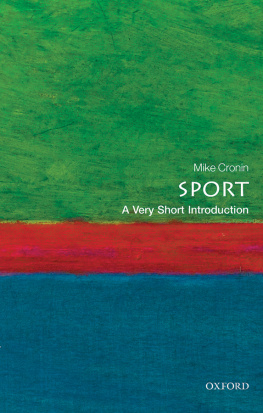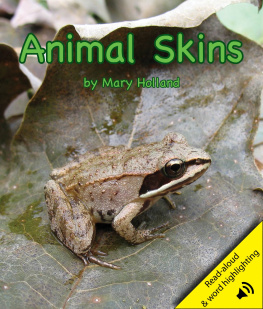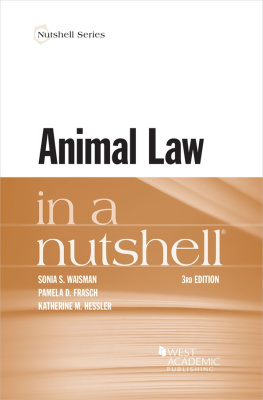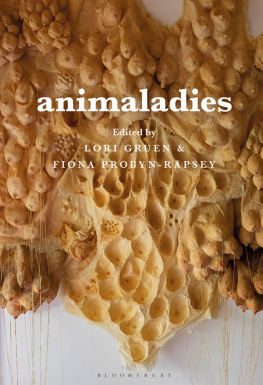Cronin - Art for animals visual culture and animal advocacy, 1870-1914
Here you can read online Cronin - Art for animals visual culture and animal advocacy, 1870-1914 full text of the book (entire story) in english for free. Download pdf and epub, get meaning, cover and reviews about this ebook. City: Pennsylvania, year: 2018, publisher: University Park;Pennsylvania State University Press, genre: Religion. Description of the work, (preface) as well as reviews are available. Best literature library LitArk.com created for fans of good reading and offers a wide selection of genres:
Romance novel
Science fiction
Adventure
Detective
Science
History
Home and family
Prose
Art
Politics
Computer
Non-fiction
Religion
Business
Children
Humor
Choose a favorite category and find really read worthwhile books. Enjoy immersion in the world of imagination, feel the emotions of the characters or learn something new for yourself, make an fascinating discovery.
- Book:Art for animals visual culture and animal advocacy, 1870-1914
- Author:
- Publisher:University Park;Pennsylvania State University Press
- Genre:
- Year:2018
- City:Pennsylvania
- Rating:5 / 5
- Favourites:Add to favourites
- Your mark:
- 100
- 1
- 2
- 3
- 4
- 5
Art for animals visual culture and animal advocacy, 1870-1914: summary, description and annotation
We offer to read an annotation, description, summary or preface (depends on what the author of the book "Art for animals visual culture and animal advocacy, 1870-1914" wrote himself). If you haven't found the necessary information about the book — write in the comments, we will try to find it.
Art for animals visual culture and animal advocacy, 1870-1914 — read online for free the complete book (whole text) full work
Below is the text of the book, divided by pages. System saving the place of the last page read, allows you to conveniently read the book "Art for animals visual culture and animal advocacy, 1870-1914" online for free, without having to search again every time where you left off. Put a bookmark, and you can go to the page where you finished reading at any time.
Font size:
Interval:
Bookmark:

Art for Animals

Nigel Rothfels, General Editor
ADVISORY BOARD:
Steve Baker (University of Central Lancashire)
Susan McHugh (University of New England)
Garry Marvin (Roehampton University)
Kari Weil (Wesleyan University)
Books in the Animalibus series share a fascination with the status and the role of animals in human life. Crossing the humanities and the social sciences to include work in history, anthropology, social and cultural geography, environmental studies, and literary and art criticism, these books ask what thinking about nonhuman animals can teach us about human cultures, about what it means to be human, and about how that meaning might shift across times and places.
OTHER TITLES IN THE SERIES:
Rachel Poliquin, The Breathless Zoo: Taxidermy and the Cultures of Longing
Joan B. Landes, Paula Young Lee, and Paul Youngquist, eds., Gorgeous Beasts: Animal Bodies in Historical Perspective
Liv Emma Thorsen, Karen A. Rader, and Adam Dodd, eds., Animals on Display: The Creaturely in Museums, Zoos, and Natural History
Ann-Janine Morey, Picturing Dogs, Seeing Ourselves: Vintage American Photographs
Mary Sanders Pollock, Storytelling Apes: Primatology Narratives Past and Future
Ingrid H. Tague, Animal Companions: Pets and Social Change in Eighteenth-Century Britain
Dick Blau and Nigel Rothfels, Elephant House
Marcus Baynes-Rock, Among the Bone Eaters: Encounters with Hyenas in Harar
Monica Mattfeld, Becoming Centaur: Eighteenth-Century Masculinity and English Horsemanship
Heather Swan, Where Honeybees Thrive: Stories from the Field
Karen Raber and Monica Mattfeld, eds., Performing Animals: History, Agency, Theater
Art for Animals

Visual Culture and Animal Advocacy, 18701914
J. Keri Cronin
The Pennsylvania State University Press
University Park, Pennsylvania
Library of Congress Cataloging-in-Publication Data
Names: Cronin, J. Keri (Jennifer Keri), 1973 author.
Title: Art for animals : visual culture and animal advocacy, 18701914 / J. Keri Cronin.
Other titles: Animalibus.
Description: University Park, Pennsylvania : The Pennsylvania State University Press, [2018] | Series: Animalibus: of animals and cultures | Includes bibliographical references and index.
Summary: Explores the ways in which visual imagery was used for animal advocacy campaigns in the late nineteenth and early twentieth centuries, and the ways in which these images were created, circulated, and consumed in a wide range of cultural contextsProvided by publisher.
Identifiers: LCCN 2017044690 | ISBN 9780271080093 (cloth : alk. paper)
Subjects: LCSH : Animal welfareHistory19th century. | Animal welfareHistory20th century. | Visual communicationHistory19th century. | Visual communicationHistory20th century. | Animals in art.
Classification: LCC HV 4705 . C 76 2018 | DDC 179/.309034dc23
LC record available at https://lccn.loc.gov/2017044690
Copyright 2018
J. Keri Cronin
All rights reserved
Printed in the United States of America
Published by
The Pennsylvania State University Press,
University Park, PA 168021003
The Pennsylvania State University Press
is a member of the
Association of University Presses.
It is the policy of The Pennsylvania State University Press to
use acid-free paper. Publications on uncoated stock satisfy
the minimum requirements of American National Standard
for Information SciencesPermanence of Paper for
Printed Library Material, ANSI Z 39.481992.
For those we choose not to see.
The visual culture of early animal advocacy has fascinated me for years, and certainly a project such as this could not be completed without the encouragement, support, and assistance of many people along the way.
I received financial assistance for this project from the Social Sciences and Humanities Research Council of Canada, and the Humanities Research Institute and Office of Research Services at Brock University, and I am grateful for this support. I also wish to thank both the staff at Penn State University Press and the two anonymous peer reviewers for their assistance in bringing this book to fruition. I am also grateful to Nigel Rothfels, the general editor of the Animalibus series, for his support of this project.
I owe a huge debt of gratitude to the librarians, archivists, and reference staff at Queens University, the University of Alberta, Brock University, Library and Archives Canada, the British Library, the Wellcome Library, Hull History Centre, and the New York Public Library, who not only assisted me with various aspects of this project, but also care for the collections of research material. I am especially grateful for the assistance and kindness of Jan Holmquist, who oversees the archives at the Massachusetts Society for the Prevention of Cruelty to Animals in Boston, for all her help with this research. I also want to thank Lesley Bell, Brittany Brooks, Sonya de Lazzer, and Elysia French for helping out with my research at various stages of this project.
Brock University has a wonderful community of scholars working on critical animal studies and human-animal studies topics, and my conversations and friendships with Lauren Corman, Kendra Coulter, and Barbara Seeber have certainly sharpened my thinking about the intersection of animal advocacy and visual culture, for which I am truly grateful. I also owe a debt of gratitude to Carol J. Adams, Steve Baker, Diana Donald, Hilda Kean, and Harriet Ritvo for their groundbreaking work, which was so instrumental in my development as a scholarin sum, these writers opened my eyes to the many ways in which animals, history, and culture are intertwined. I also want to thank Carolyn Merino Mullin, co-founder and former executive director of the Animal Museum, for all the work she has done to highlight the importance of preserving and understanding the history of human-animal relationships.
Susie Coston and Siobhan Poole have taught me so much about kindness, caring, and compassion for all species, and those lessons have fueled my drive to understand how visual representations can have very real and important consequences for animals. Likewise, Mary Shannon Johnstone, Isa Leshko, and Jo-Anne McArthur have inspired me through their work in many important ways.
Thank you to Gregory and Lisa Betts, Alisa Cunnington, Amy Friend, Leah Knight, Fiona McDonald, Nikki Pinder, Maria Power, Kirsty Robertson, Linda Steer, Donna Szoke, and Kimberly Wahl for your friendship, kindness, and willingness to chat about art, animals, and advocacy over a pint of beer or a cup of tea. You have all helped with this book more than you could know. Likewise, I deeply appreciate the support and encouragement of my parents, Ruthie and Bill Casey, over the years.
And, finally, to my partner, Laurie Morrison, and the wonderful furry friends with whom we share our home (Jill the house rabbit and Jenny, Tom, Ollie, and Ernie the cats)thank you so very much for everything. This book would not be possible without you.
On a cold, blustery autumn day, a small group of activists gather on a cement island in the middle of a busy road in
Font size:
Interval:
Bookmark:
Similar books «Art for animals visual culture and animal advocacy, 1870-1914»
Look at similar books to Art for animals visual culture and animal advocacy, 1870-1914. We have selected literature similar in name and meaning in the hope of providing readers with more options to find new, interesting, not yet read works.
Discussion, reviews of the book Art for animals visual culture and animal advocacy, 1870-1914 and just readers' own opinions. Leave your comments, write what you think about the work, its meaning or the main characters. Specify what exactly you liked and what you didn't like, and why you think so.

